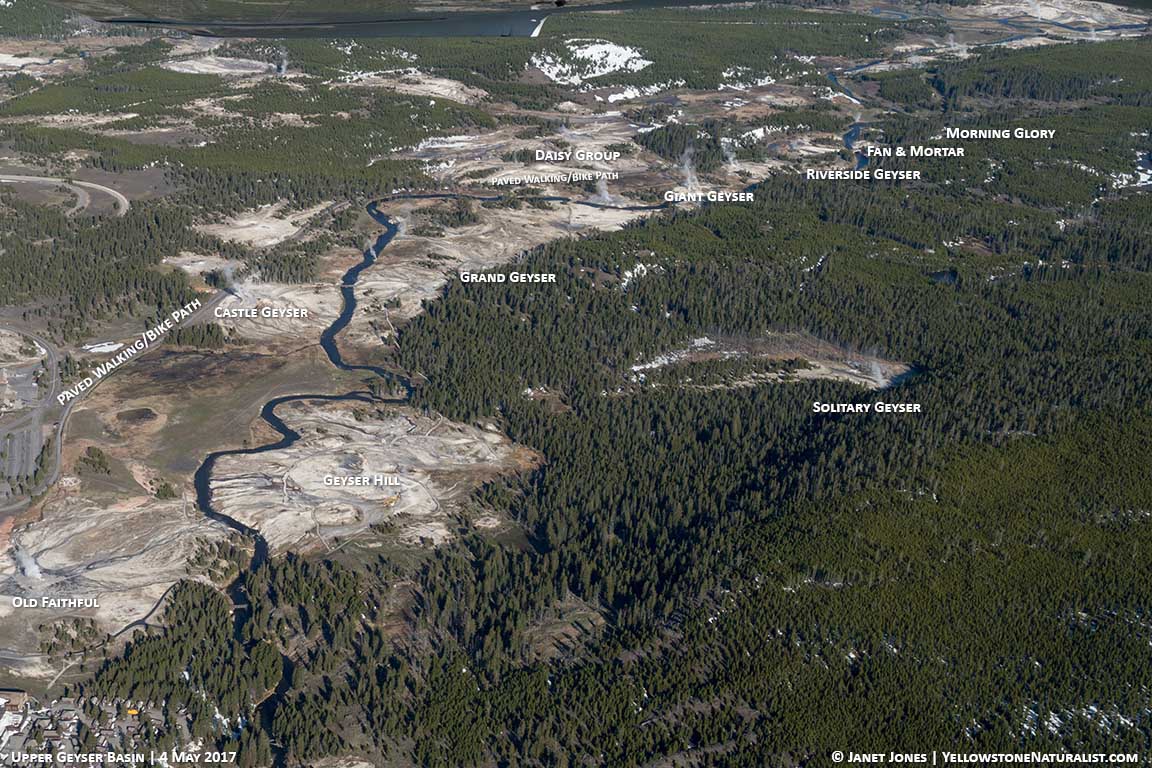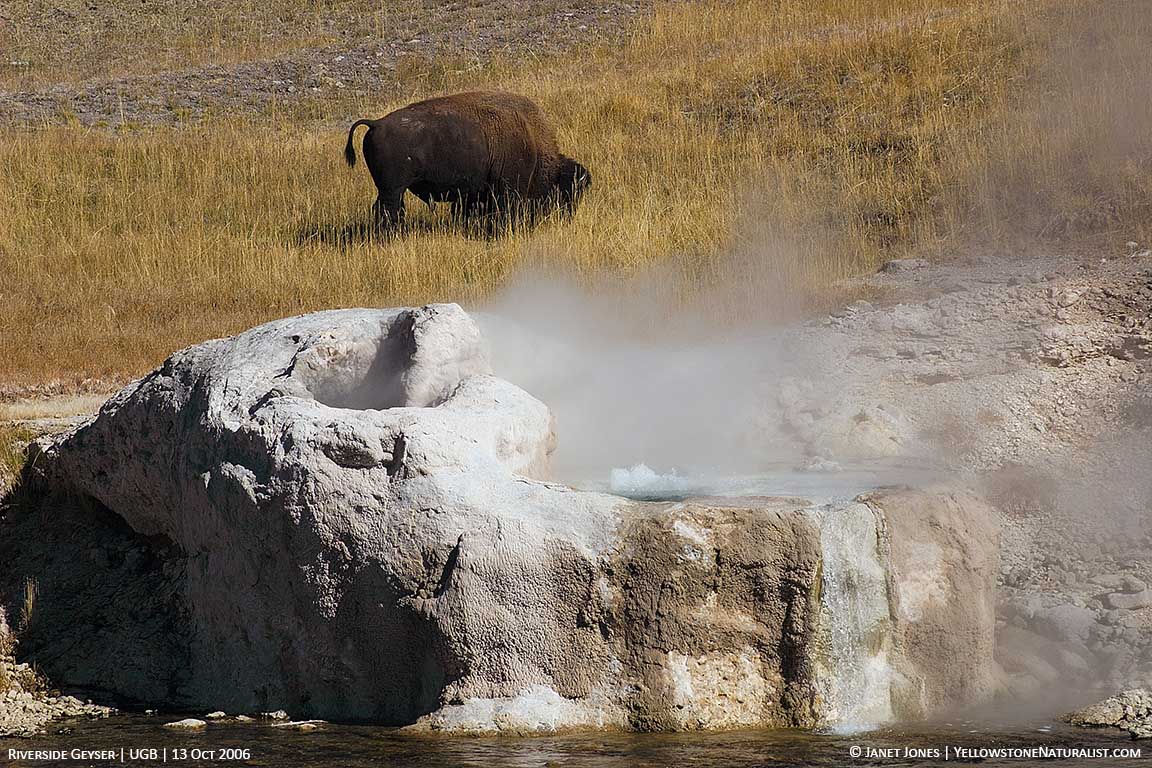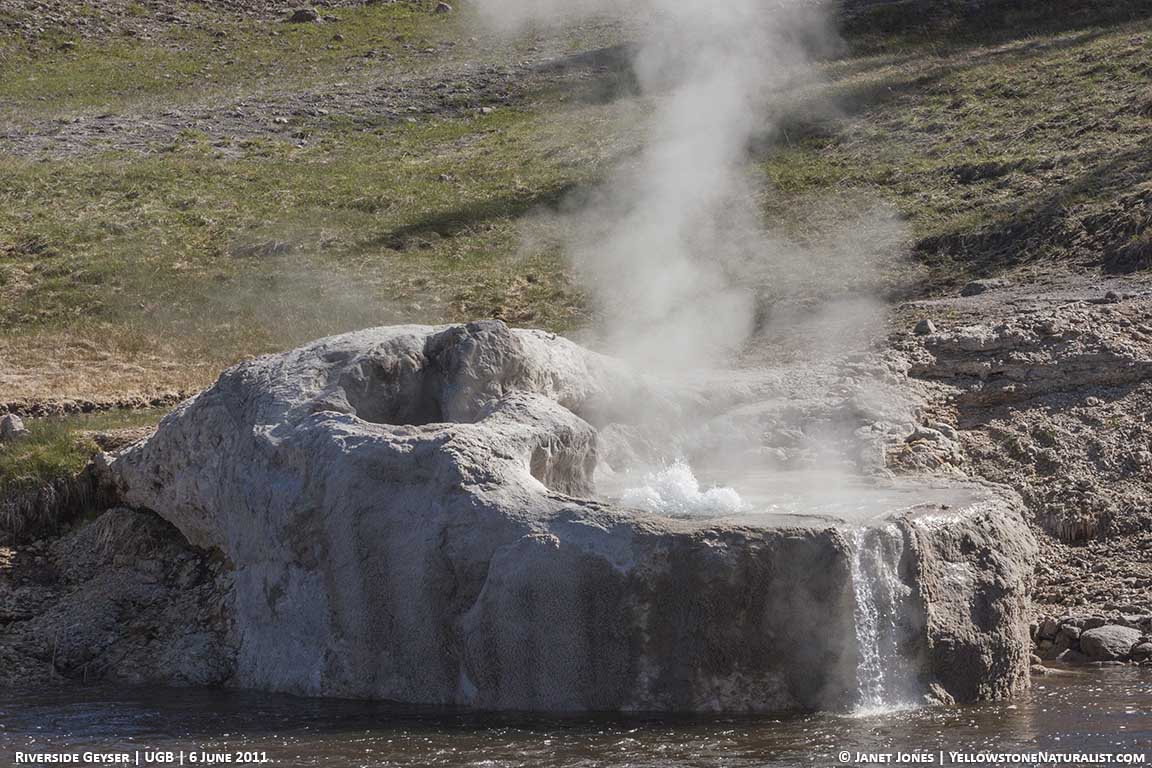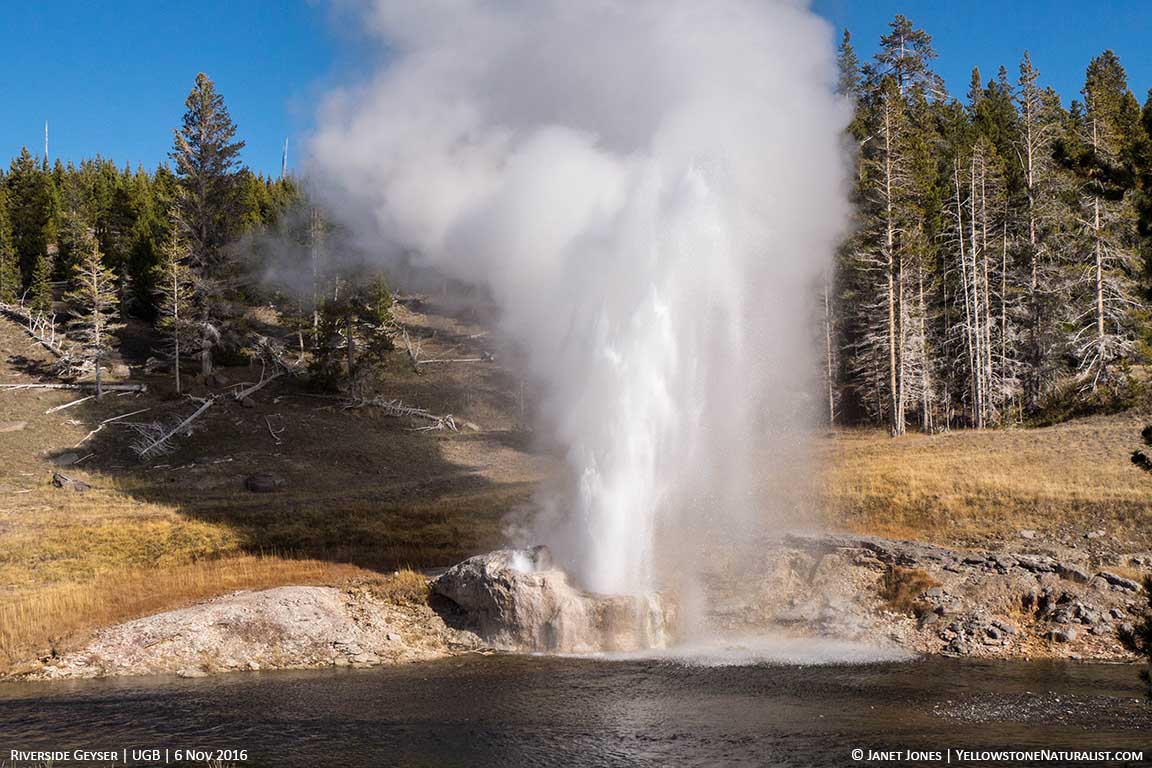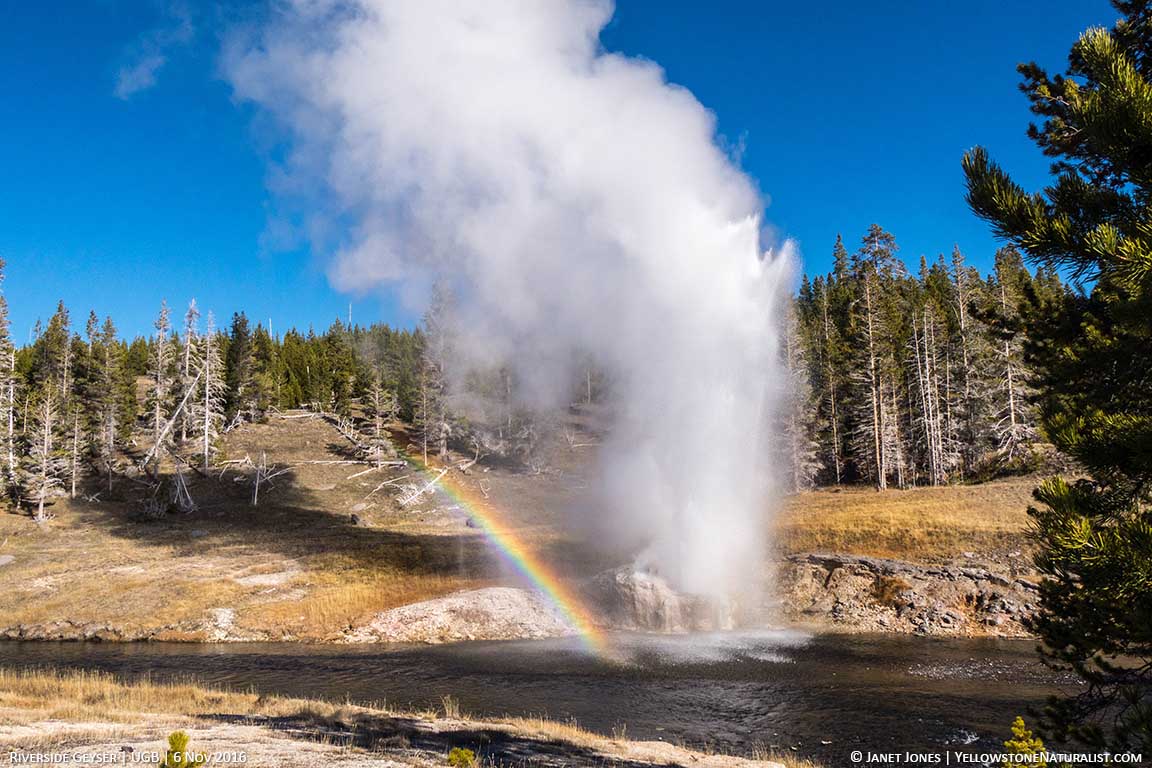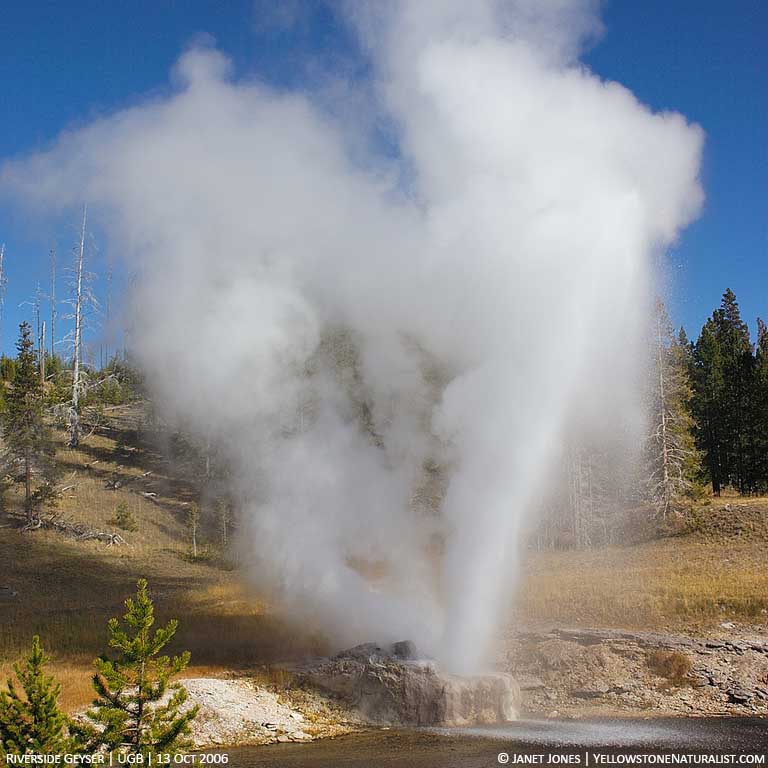Get to know Riverside Geyser
Riverside Geyser is a beautiful geyser that’s often more reliable than Old Faithful, sits in a lovely setting and often shows rainbows in the spray in the late afternoon. In this article, I’ll explain how to watch for the signs of an eruption and share some of my photos of Riverside Geyser.
THE BASICS OF RIVERSIDE
• Riverside usually erupts every 6 hours (give or take 20 minutes).
• It is a predicted geyser both with the National Park Service and Geyser Times.
• It erupts to a height of about 75 feet.
• Eruptions last about 20 minutes.
• Is a longer walk from Old Faithful – not quite a mile.
WHERE RIVERSIDE IS LOCATED
Riverside Geyser is located about a mile from Old Faithful and can be reached by following the paved walking/bike path past the Daisy Geyser area. The path will turn off to your right with a sign pointing you to Riverside Geyser. When you arrive in the area across the river from Riverside Geyser’s cone, you’ll find benches where you can wait for the eruption. Behind these benches are a couple of smaller hot springs not normally known to erupt.
HISTORY
Many geysers have shown changes in their behavior over the years, but Riverside has remained extremely consistent. The average for intervals between eruptions range from 5.5 to 8.5 hours, but recently most fall around the 6.5-hour mark. That’s pretty much what Riverside has done all along, only shortening its interval after the 1959 Hebgen Lake earthquake. The reason for its regularity comes from the fact that it doesn’t share its water with other thermal features that would alter the amount of water and energy available.
WATCHING FOR AN ERUPTION
Riverside’s cone rises from the edge of the Firehole River and the eruptions arch over the river, making for a lovely scene. The cone itself has an upper part and a lower part, often described as a chair. The upper part of the cone may splash occasionally prior to an eruption, but the main eruption comes from the lower part.
The first thing to look for when you arrive in the area is overflow from the lower part of the cone. If you see overflow, then you’re at least within a couple of hours of an eruption. The overflow begins 1.5 to 2 hours before the start. As the eruption nears, two smaller vents behind the main one on the lower part of the cone start to bubble. They increase and decrease in intensity and you may see splashes from the upper vent.
Eventually, you’ll see larger splashes from the main vent. Most of the time this will build into the full eruption, but if not, you’ll have a bit longer (maybe another 15 to 20 minutes) to wait as this attempt to erupt took some of the energy away. Once the eruption is on and the water reaches its full height, it holds this height for about five minutes before the water column begins to lower. However, the water phase lasts nearly 20 minutes and will end with a short steam phase.
RAINBOWS
Riverside Geyser is well known for having rainbows in the spray that falls into the river. Try walking up and down the viewing area to see if you can catch a rainbow. And on rare occasions, the steam from both vents might just create a natural heart shape.
